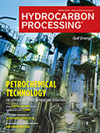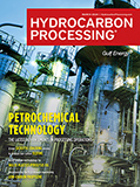Europe
Refined fuels and oil prices: long positions decline as distillate sales stall price rally
Benchmark oil prices plateau as investors finish repurchasing bearish short positions, impacting refined fuels and U.S. natural gas with declining sales and a short covering rally, respectively.
Make SAF, not electricity from household waste, urges boss of UK’s largest airports group
The UK risks missing out on a significant opportunity to reduce its carbon footprint by continuing to incinerate household waste, rather than use it to make SAF, according to a new study released by MAG.
Wärtsilä and EBDG collaborate on green methanol-powered barge
Technology group Wärtsilä has entered into a collaboration agreement with Seattle, (U.S). based naval architecture and marine engineering firm, Elliott Bay Design Group, to further develop EBDG’s Clean Harbor Alternative Mobile Power Barge design featuring Wärtsilä’s methanol engine technology.
Ryanair to take additional 500 tons SAF from OMV in 2024
Following Ryanair’s purchase of 500 tons of SAF from OMV in October last, the airline has announced that it will take an additional 500 tons of SAF from OMV in 2024.
Tecnimont awarded new petrochemical contract by Sonatrach in Algeria worth $1.1 B
Maire announced that its subsidiary Tecnimont has been awarded by Sonatrach through a tendering process an EPCC contract for a new linear alkyl benzene plant in the industrial zone of Skikda, located 350 km east of Algeria.
Malaysia to monitor changes in EU curbs on palm biofuel after WTO ruling
Malaysia said it will closely monitor how the EU responds to a WTO ruling that supported the bloc's stance that biofuels causing deforestation cannot be regarded as renewables, but sought changes in how it implemented that decision.
Montfort in talks with Sinopec for UAE fuel oil facility sale
Geneva-based trading house Montfort Group is in discussion to sell part or all of its refining facility in the UAE to the fuel oil arm of Chinese state giant Sinopec Corp.
LyondellBasell selects Emerson to modernize automation technology at olefins production plants
Global software and technology leader Emerson has been selected by multinational chemical company LyondellBasell to modernize control systems and software at its Wesseling complex in Germany.
Nigeria's Dangote wants to set up trading arm for Lagos mega refinery
Africa's richest man Aliko Dangote is planning to set up an oil trading arm, likely based in London, to help run crude and products supply for his new refinery in Nigeria.
Clariant launches CLARITY Prime - the digital service for AI-powered optimization of catalyst operation
Clariant, a sustainability-focused specialty chemical company, today announced the release of CLARITY Prime, an advanced digital service for syngas plants, an upgrade of its cloud-based service portal CLARITY.

- Renewable fuels project in Canada begins production 4/19
- Jet fuel demand growth lags as air traffic exceeds pre-pandemic level 4/19
- Jet2.com to use SAF at London Stansted Airport 4/19
- Neste and New Jersey Natural Gas target reducing greenhouse gas emissions with Neste MY Renewable Diesel 4/19
- Cepsa and Evos join up for green methanol storage in Spain and the Netherlands 4/19
- Russia's Bashneft oil company installs anti-drone nets to protect refineries 4/19




